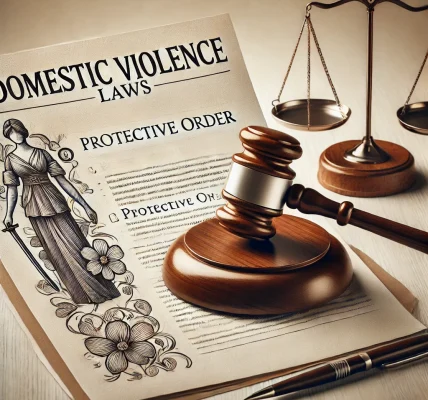Self-defense is a fundamental legal right that allows individuals to protect themselves, their loved ones, and their property from harm. However, the laws governing self-defense vary by jurisdiction, and the legal use of force depends on specific conditions. Understanding these laws can help individuals know their rights while avoiding legal consequences.
This guide provides a detailed overview of self-defense laws, when force is legally justified, and possible legal defenses if charged with excessive force.
Understanding Self-Defense Laws
Self-defense laws exist to ensure that individuals can protect themselves from imminent harm without facing criminal liability, provided they act within the legal framework. These laws typically revolve around reasonable force, imminent threat, and proportionality.
Key Elements of Legal Self-Defense
For an act of self-defense to be legally justified, the following conditions must usually be met:
- Imminent Threat – The danger must be immediate and real, not a future or hypothetical threat.
- Proportional Force – The level of force used must be proportionate to the threat faced.
- Reasonable Belief of Harm – The person acting in self-defense must have a genuine and reasonable belief that they were in danger.
- Lack of Aggression – The individual using self-defense should not have provoked or initiated the conflict.
Types of Self-Defense Laws
Different jurisdictions interpret self-defense differently. The main legal doctrines governing self-defense include:
1. Stand Your Ground Laws
- In jurisdictions with Stand Your Ground laws, individuals have the right to use force, including deadly force, to defend themselves without a duty to retreat, provided they are in a place they are legally allowed to be.
- Example: If someone threatens you with a weapon in a public place, you can use force to defend yourself instead of attempting to flee.
2. Duty to Retreat Laws
- Some states require individuals to attempt to retreat before using force, unless they are in their home or a legally protected space.
- Example: If attacked on the street, you must try to escape before resorting to force, unless doing so would put you in greater danger.
3. Castle Doctrine
- This law allows individuals to use force, including deadly force, to protect their home (or sometimes workplace or vehicle) from an intruder without the duty to retreat.
- Example: If someone unlawfully breaks into your home, you can use force to protect yourself and your family.
4. Defense of Others
- Individuals may use force to protect another person from an unlawful attack, provided the same self-defense criteria apply.
- Example: If you see someone being assaulted, you may intervene to protect them using reasonable force.
5. Defense of Property
- The use of force to defend property is generally limited. Deadly force is rarely justified unless a person’s life is also at risk.
- Example: You cannot use deadly force to stop a thief from stealing your car unless they pose a direct threat to your safety.
When Is Deadly Force Justified?
Deadly force (force that can cause death or serious injury) is typically only justified if:
- The attacker has a weapon or is using deadly force.
- The victim genuinely fears for their life or serious bodily harm.
- Other legal conditions (such as Stand Your Ground or Castle Doctrine laws) are met.
If these conditions are not met, using deadly force can lead to criminal charges such as manslaughter or murder.
Possible Legal Defenses in Self-Defense Cases
If someone is charged with excessive force or unlawful self-defense, the following legal defenses may apply:
1. Justified Use of Force
- If the threat was real and imminent, and the response was proportional, a person can argue they acted within their legal rights.
2. Lack of Intent
- If force was used accidentally, and there was no intent to harm, this could reduce or dismiss charges.
3. Acting Under Duress
- If someone was forced into using force by a third party, this could be a valid defense.
4. Mistaken Identity
- If the accused was wrongly identified as the aggressor, evidence can be presented to prove innocence.
5. Insufficient Evidence
- If the prosecution cannot prove beyond a reasonable doubt that the use of force was unlawful, the charges may be dropped.
Steps to Take If You Are Involved in a Self-Defense Incident
- Remain Calm – Avoid escalating the situation further.
- Call 911 Immediately – Report the incident as soon as possible.
- Do Not Admit Fault – Anything you say can be used against you in court.
- Gather Evidence – If possible, take photos or videos of the scene.
- Contact a Lawyer – Speak with a criminal defense attorney before giving statements to the police.
Common Misconceptions About Self-Defense Laws
1. You Can Use Force in Any Situation ❌
- Self-defense must meet legal criteria. Retaliation or preemptive attacks do not qualify.
2. You Can Always Use a Weapon ❌
- Weapons can only be used if deadly force is legally justified.
3. You Will Not Face Legal Consequences ❌
- Even in clear self-defense cases, legal proceedings may still occur.
Conclusion
Self-defense is a legal right, but its application depends on specific laws in each jurisdiction. Understanding when and how force can be legally used can help individuals protect themselves while staying within the boundaries of the law. If faced with legal trouble after a self-defense incident, consulting a criminal defense attorney is crucial to ensuring your rights are upheld.




